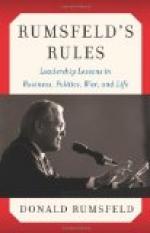The enemy’s position could be seen four or five miles to the north, and he was known on Thursday to be strongly entrenched. A passage for Warren’s division was chosen at Trichardt’s Drift five miles above Potgieter’s and near to Wagon Drift which is marked on the sketch map issued by the Intelligence Division. From Trichardt’s Drift there is evidently a road leading into the Bethany-Dewdrop Road, and parallel to that which runs from Potgieter’s Drift. On Tuesday, the 16th, Lyttelton’s brigade of infantry with a battery of howitzers crossed the Tugela at Potgieter’s Drift and gained a line of hills to the north, probably the edge of the plateau on which lies the Boer position. The telegrams say nothing of bridge-making at Potgieter’s Drift, but are explicit as to the crossing of at least some of the artillery. On Wednesday General Lyttelton shelled the Boer position with howitzers and naval guns without drawing a reply. This silence of the Boer guns is correct for the defenders of a position, as a reply would enable the assailant to fix the position of the guns and to concentrate his fire upon them. The same day (Wednesday) Warren’s division crossed the Tugela at Trichardt’s Drift, and driving in the enemy’s outposts secured a lodgment on the low wooded hills about a mile north of the river; this division, after its advance guard had crossed, was passed over by a pontoon bridge. The remainder of yesterday may have been spent in reconnaissance, bridge building—for an army that has crossed a river needs to have behind it as many bridges as possible—in bringing up all the forces destined for the battle, perhaps including Hildyard’s brigade, and in making complete arrangements for the attack which was probably delivered this morning.
Sir Redvers Buller has aimed his blow in a right direction, for, if it can be delivered with effect, if he can drive the Boers back, their army will be in a perilous situation. The plan evidently is that while Clery’s division holds the Boers in front, Warren’s should strike upon their right flank. If, then, the combined attack of the two divisions forces the Boers back the situation would be that the Boer army would have to retreat eastward across the Klip River, its retreat in any other direction being barred by the defences of Ladysmith, by Warren’s and Clery’s divisions, and by the British force in the lines at Chieveley. In such a situation a forced retreat would be disastrous for the Boers, as Sir Redvers Buller’s two divisions would be nearer to the Boer line of retreat through Glencoe than the Boer army.




